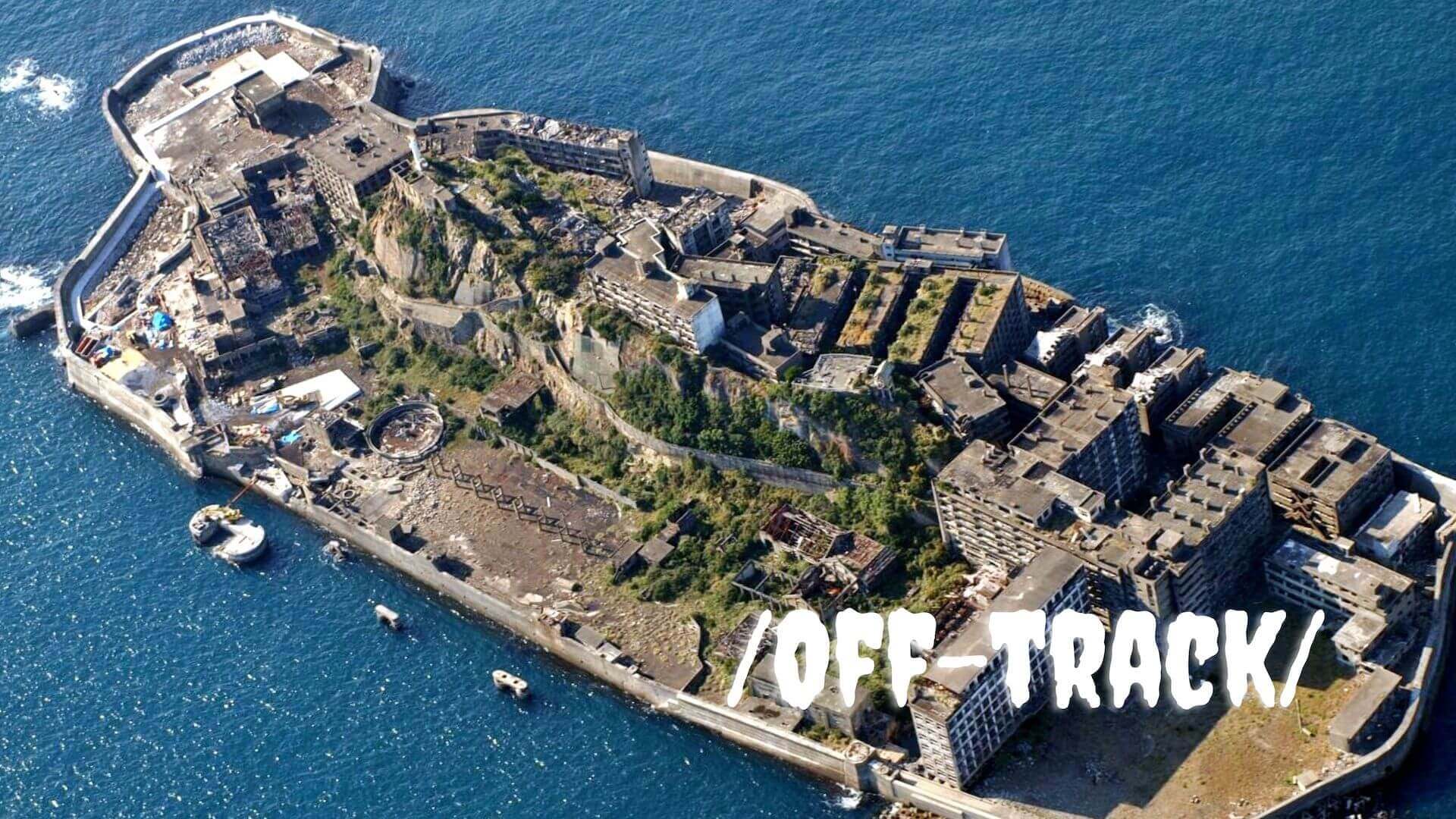
Hashima Island: The Abandoned Battleship Island of Japan
Imagine visiting a place that was once a thriving industrial city, but now lies abandoned and forgotten by the world. A place where you can see the remnants of a past civilization, frozen in time and decay. A place that has a dark and tragic history, but also a fascinating and unique culture. Welcome to Hashima Island, the abandoned battleship island of Japan.
Hashima Island, also known as Gunkanjima, is a tiny island off the coast of Nagasaki, Japan. It was the site of a coal mine that operated from 1887 to 1974, and at its peak, it had over 5,000 residents living in concrete apartment blocks. People also call the island Gunkanjima, which means battleship island because it looked like a warship from afar. But behind its impressive appearance, there was a hidden reality of forced labor, war crimes, and human suffering.
In this article, we will explore the history, culture, and secrets of Hashima Island, and why it is now a tourist attraction and a UNESCO World Heritage Site. We will also share some interesting facts about this mysterious and haunting place that will surprise you. Join us as we discover Hashima Island: a forgotten world.
How Hashima Island Became a Coal Mining Hub
Hashima Island was not always a concrete jungle. It was once a small and rocky island with no vegetation or fresh water. The island’s fate changed in 1810 when a fisherman discovered coal in the seabed around the island. However, it was not until 1887 that Mitsubishi, a Japanese conglomerate, bought the island and started to develop it as a coal mine.
Mitsubishi built the first shafts and tunnels under the sea. It also constructed the first concrete buildings on the island. The company also built a massive seawall to protect the island from typhoons and waves. The seawall was 15 meters high and 1.5 kilometers long. It gave the island its distinctive shape and nickname: Gunkanjima, or battleship island.
As the coal demand increased, so did the population of the island. Mitsubishi built more apartment blocks, schools, hospitals, temples, cinemas, and other facilities for the miners and their families. The island became a self-contained city, with its own newspaper, radio station, and sports teams. By 1959, the island had 5,259 residents, making it one of the most densely populated places in the world. The population density was 835 people per hectare, compared to 103 people per hectare in Tokyo at that time.
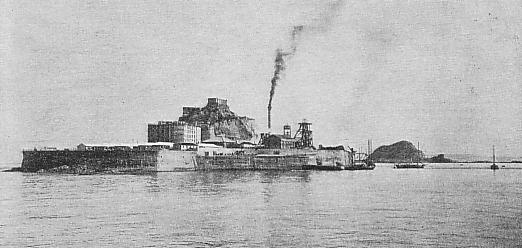
Life on Hashima Island was not easy, but it was not boring either. The miners worked hard in the dark and dangerous tunnels, but they also enjoyed various forms of entertainment and leisure. They watched movies, played pachinko, sang karaoke, and celebrated festivals. They also had a unique culture and dialect that distinguished them from other Japanese people.
The Dark Side of Hashima Island: Forced Labour and War Crimes
However, Hashima Island also had a dark and tragic side that was hidden from the public eye. During World War II, Japan invaded and occupied many parts of Asia, and forced millions of people to work as slave laborers for its war effort. Hashima Island was one of the places where these atrocities took place.
Between 1939 and 1945, about 1,300 Korean and Chinese prisoners of war were brought to Hashima Island to work in the coal mine. They were treated brutally by the Japanese guards and supervisors. They received low wages, insufficient food, poor medical care, and no safety equipment. Furthermore, they suffered from malnutrition, diseases, accidents, and abuse. Many of them died on the island or in the sea.
After the war ended in 1945, Japan surrendered and withdrew from its occupied territories. The surviving laborers were freed and returned to their homelands. However, they received no recognition or compensation from Japan or Mitsubishi for their suffering. The Japanese government denied or downplayed its responsibility for the war crimes committed on Hashima Island and other places.
It was not until 2015 that Mitsubishi issued a formal apology to the former laborers and their families. The company also agreed to set up a fund to support them financially and morally. The apology was welcomed by some of the victims, but rejected by others who demanded more justice and accountability.
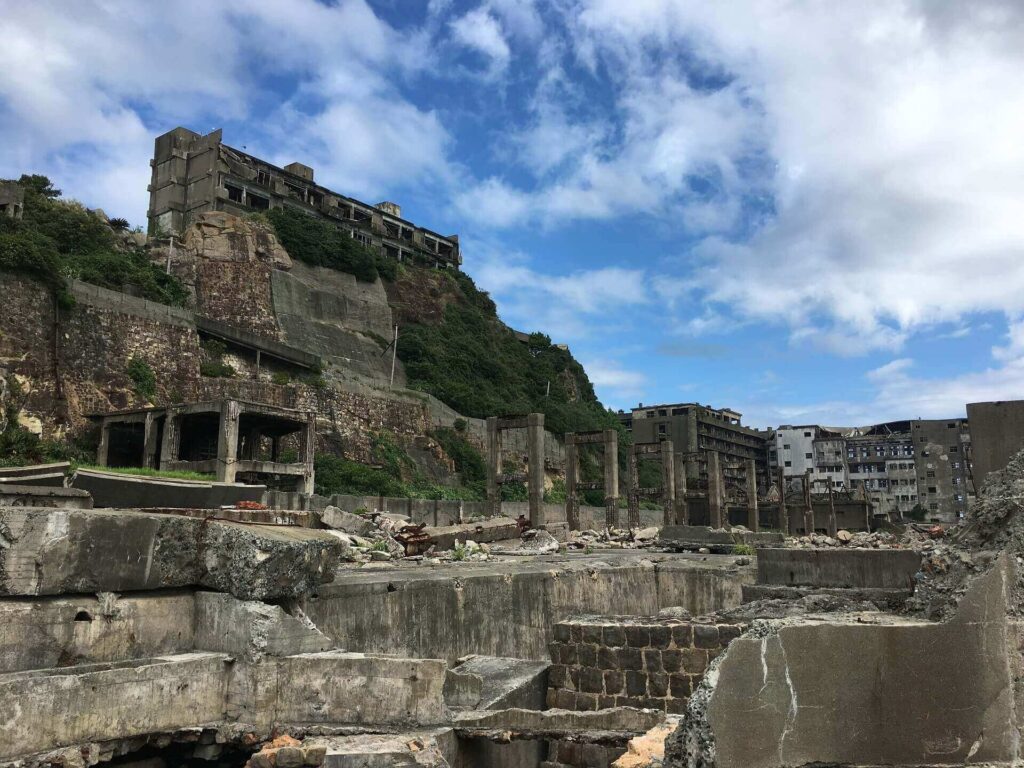
The Decline and Abandonment of Hashima Island
Hashima Island’s prosperity did not last long after the war. In the 1960s, Japan’s economy shifted from coal to petroleum as its main source of energy. The coal demand declined rapidly, and so did the profitability of the mine. Mitsubishi decided to close the mine in 1974, after 87 years of operation.
The closure of the mine meant the end of Hashima Island’s existence as a city. The residents had to leave their homes and belongings behind and move to other places in Japan. Some of them were sad to leave their birthplace, while others were relieved to escape their harsh life. Within a few months, the island became completely deserted.
For decades, Hashima Island was left undisturbed by humans. The concrete buildings and structures started to deteriorate due to weathering and erosion. The seawall cracked and collapsed in some parts. The windows shattered and the walls crumbled. The island became a ghost town, haunted by its past.
The island was also closed to visitors for safety reasons. Only a few explorers, photographers, filmmakers, and researchers managed to sneak into the island illegally or with special permission. They documented the island’s ruins and secrets and shared them with the world. The island gained a reputation as a mysterious and eerie place and sparked curiosity and interest among many people.
The Rebirth of Hashima Island as a Tourist Attraction and World Heritage Site
In 2009, Hashima Island was reopened to the public as a tourist attraction. The local government and Mitsubishi collaborated to restore some parts of the island and make it accessible and safe for visitors. They also built a museum and a memorial to educate people about the island’s history and culture.
Since then, thousands of tourists have visited the battleship island every year. They can take a boat ride from Nagasaki to the island, and join a guided tour that takes them around the island. They can see the remains of the apartment blocks, the mine shafts, the school, the hospital, and other facilities. Additionally, they can hear stories and anecdotes from former residents and workers who serve as guides or volunteers.
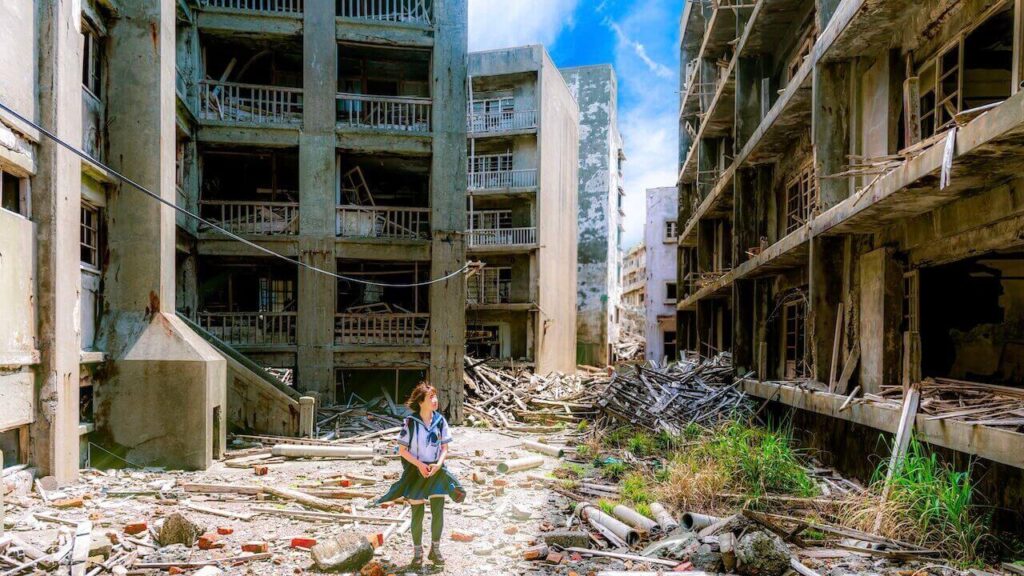
In 2015, Hashima Island was formally approved as a UNESCO World Heritage Site, as part of Japan’s Sites of Japan’s Meiji Industrial Revolution: Iron and Steel, Shipbuilding, and Coal Mining. The island was recognized as a symbol of Japan’s rapid industrialization and modernization in the late 19th and early 20th centuries. However, the designation also came with controversy and criticism from some countries, especially South Korea and China, who accused Japan of whitewashing its war crimes and human rights violations on the island.
Despite the challenges and disputes, Hashima Island remains a valuable and unique place that deserves attention and respect. The island is a place that reflects both the glory and the horror of human history. It is a place that challenges us to think about our past, present, and future. It is a place that offers us a glimpse into a forgotten world.
10 Interesting Facts about Hashima Island
Being one of the creepiest abandoned places around the world, Hashima Island is a place full of decay and dark secrets, but also of wonder and curiosity. Here are some interesting facts about this abandoned island that will surprise you:
Architecture and Infrastructure
1. Hashima Island was the first place in Japan to use reinforced concrete for its buildings, which made them more resistant to typhoons and fire. The island had over 30 concrete apartment blocks, some of which were nine stories high.
2. Hashima Island had many facilities and amenities for its residents, such as a school, a hospital, a cinema, a communal bath, a rooftop garden, a shrine, a pachinko parlor, and even a brothel. The island also had its own newspaper, radio station, and sports teams.
3. Hashima Island was also one of the most dangerous places to work in Japan, with an average of 1.6 deaths per month in the mine. The miners had to deal with high temperatures, high humidity, gas explosions, cave-ins, and flooding.
Culture and Entertainment
4. Hashima Island had a unique culture and dialect that distinguished them from other Japanese people.
5. Hashima Island was featured in several movies and video games, such as the James Bond film Skyfall (2012), the anime film In This Corner of the World (2016), the horror film Gunkanjima: The Forgotten Island (2017), the survival horror game Siren: Blood Curse (2008), and the action-adventure game Yakuza 6: The Song of Life (2016).
6. Hashima Island is home to several endangered species of plants and animals, such as the Japanese wood pigeon, the black-faced spoonbill, the Japanese murrelet, and the Hashima Morning Glory. The island also has a unique ecosystem of algae, fungi, mosses, and lichens that grow on the concrete walls.
History and Politics
7. Hashima Island was once the most densely populated place in the world, with 835 people per hectare in 1959. That’s more than 8 times the population density of New York City today.
8. Hashima Island was a site of forced labor and war crimes during World War II. About 1,300 Korean and Chinese prisoners of war were brought to the island to work in the mine. They were treated brutally and many of them died on the island or in the sea.
9. Hashima Island was abandoned in 1974 when the coal reserves ran out and the mine was closed. The residents left their homes and belongings behind, and the island became a ghost town.
10. Hashima Island was closed to visitors for decades until it was reopened as a tourist attraction in 2009. Some parts of the island were restored and made accessible for tourists. The island also became a UNESCO World Heritage Site in 2015.
The Legacy of Hashima Island
Hashima Island is a place that evokes mixed feelings of awe and horror. It is a place that tells a story of Japan’s industrialization, war, and abandonment. It is also a place that raises questions about human rights, memory, and heritage. How should we remember the victims of the battleship island? How should we preserve and promote its cultural and historical value? And how should we balance the interests of tourism and conservation?
These are some of the challenges and opportunities that face Hashima Island today. As a tourist attraction and a World Heritage Site, Hashima Island attracts visitors from all over the world who want to see its ruins and learn about its past. As a symbol of Japan’s Meiji Industrial Revolution, Hashima Island represents an important part of Japan’s history and identity. And as an abandoned island, Hashima Island offers a unique and captivating experience for those who seek adventure and mystery. Whether you are interested in history, culture, or nature, Hashima Island has something for everyone.
Don’t Miss the Chance to Visit Hashima Island: Book Your Tour Now
If you are interested in visiting Hashima Island, you should book a tour as soon as possible. The battleship island is a popular and unique destination that attracts many visitors from all over the world. However, you cannot visit the island on your own, as it is restricted by the government for safety and preservation reasons. You must join a guided tour conducted by a licensed operator, who will take you to the island by boat and show you around the island’s ruins and secrets. You can also learn more about the island’s history, culture, and heritage from the tour guides, who are often former residents or workers of the island. A tour to Hashima Island is a once-in-a-lifetime experience that you don’t want to miss. To visit the battleship island, book your tour now:
Note:
This post contains affiliate links from which I can earn commissions if you use services or buy products from the blog’s partners. If you love the blog, please use the services or buy the products. In that way, you give me support for the blog’s maintenance and development. I appreciate it a lot and thank you for that!
IF YOU INTEREST IN VISITING THE ABANDONED HASHIMA ISLAND, ‘PIN IT’ NOW TO SAVE YOUR INFO
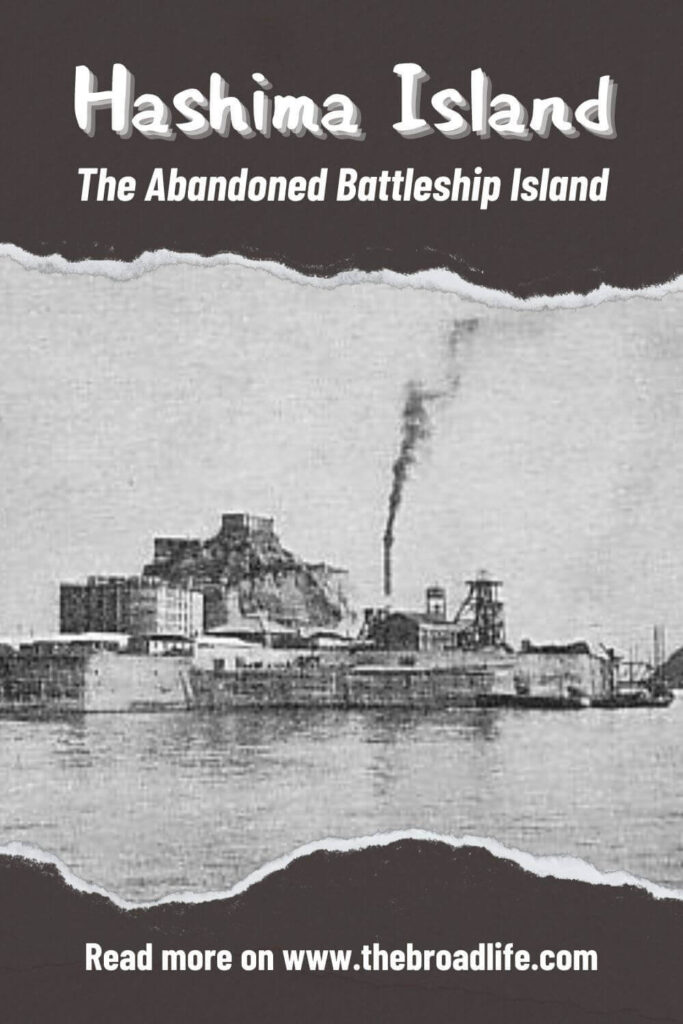
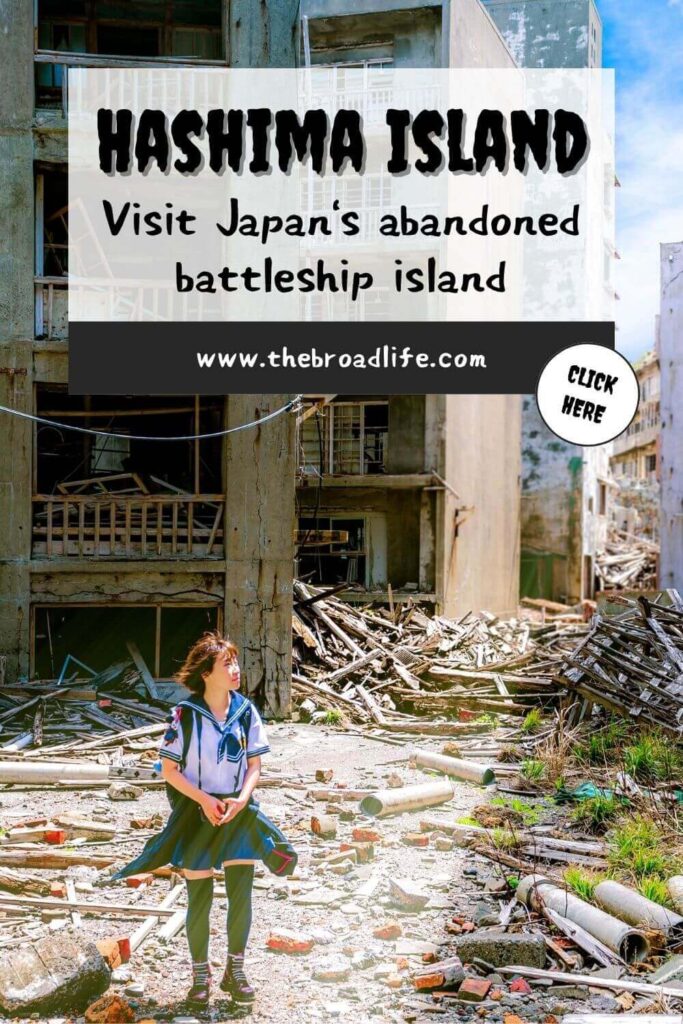
17 Comments
-
-
Ntensibe Edgar
Nnnniiiccceeeee….this island is shaped exactly like a warship! It’s good to have you keep tabs on it. it would be a shame for the world to come, not to know of this place.
-
Luna S
I’ve seen a video of this spot before & it is crazy to see basically a whole floating city. I enjoyed reading your post on this.
-
Richard Lowe
Very interesting. I like history yet I’ve never heard of this place. I’ve put it on my bucket list.
-
Monidipa
This article about Hashima Island is so intriguing! It’s like stepping into a mysterious world with your vivid descriptions and historical insights. Your storytelling talent makes it a captivating read. Well done, and keep sharing these fascinating stories!
-
Ebony
This looks like such a cool and amazing historical place to visit. Adding it to our family’s must visit list since we plan to go to japan soon one day!
-
christian foremost
Wow, the place still looks frozen in time. One can totally film a movie in there!
-
Melanie E
That was really interesting. It sounds like there is a lot of history surrounding this island. It’s awful to think about the atrocities that took place there.
-
May
This is a really interesting piece of history. I’ve not known about the slave labors in this island during the wars. I’m surprised they even paid the slave labourers (despite their rates). I’d think slave labour has no wages at all.


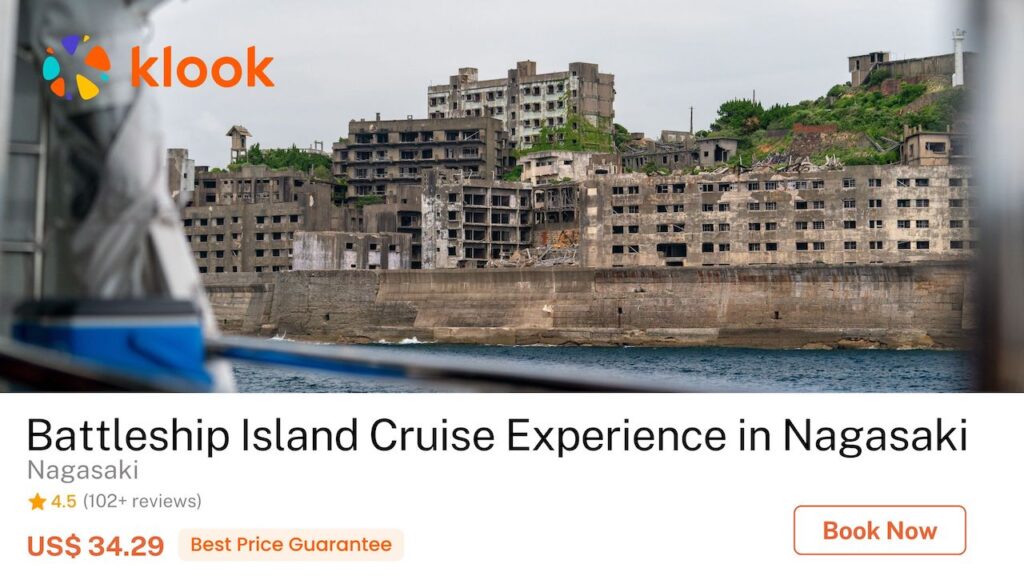

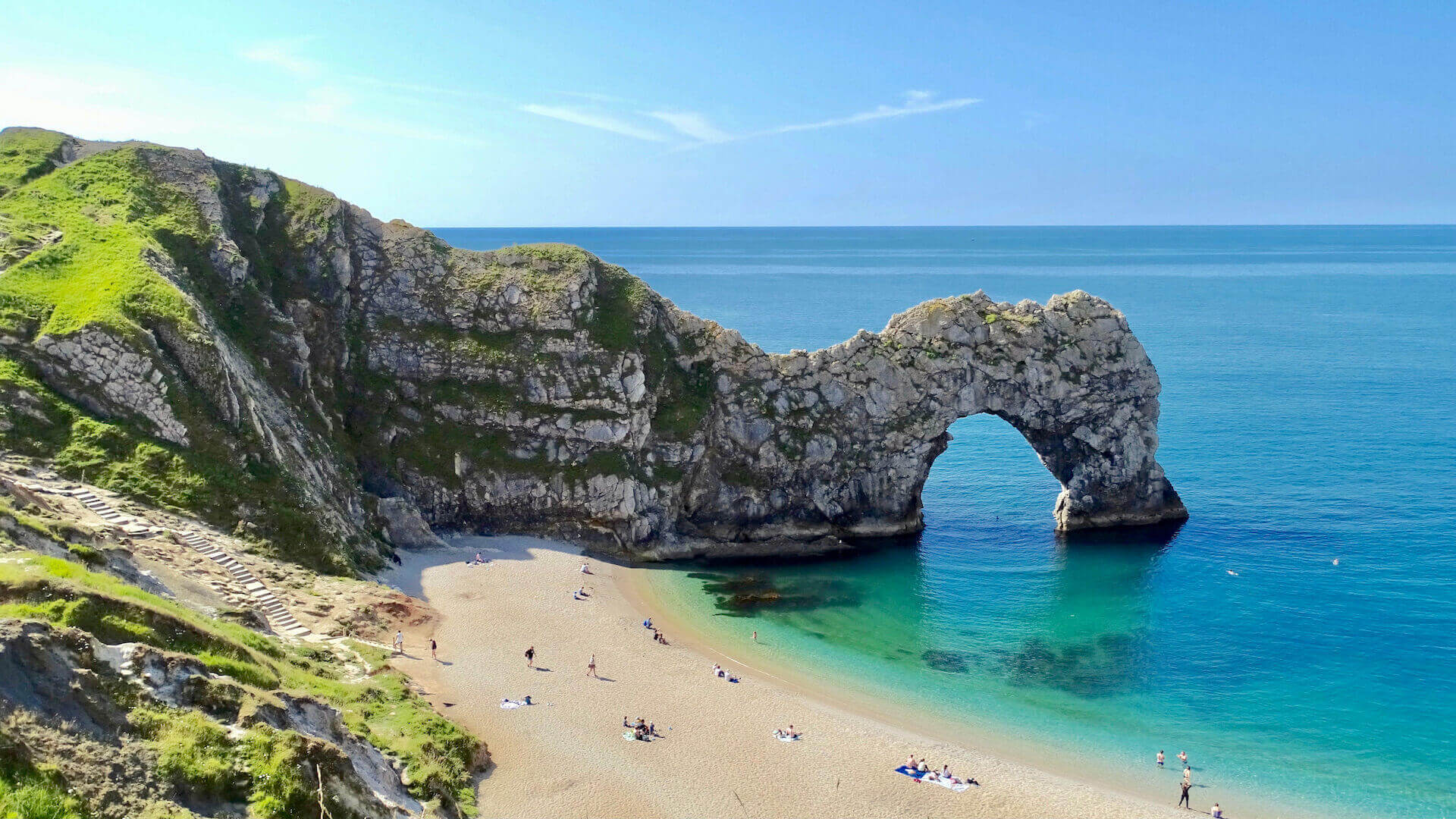

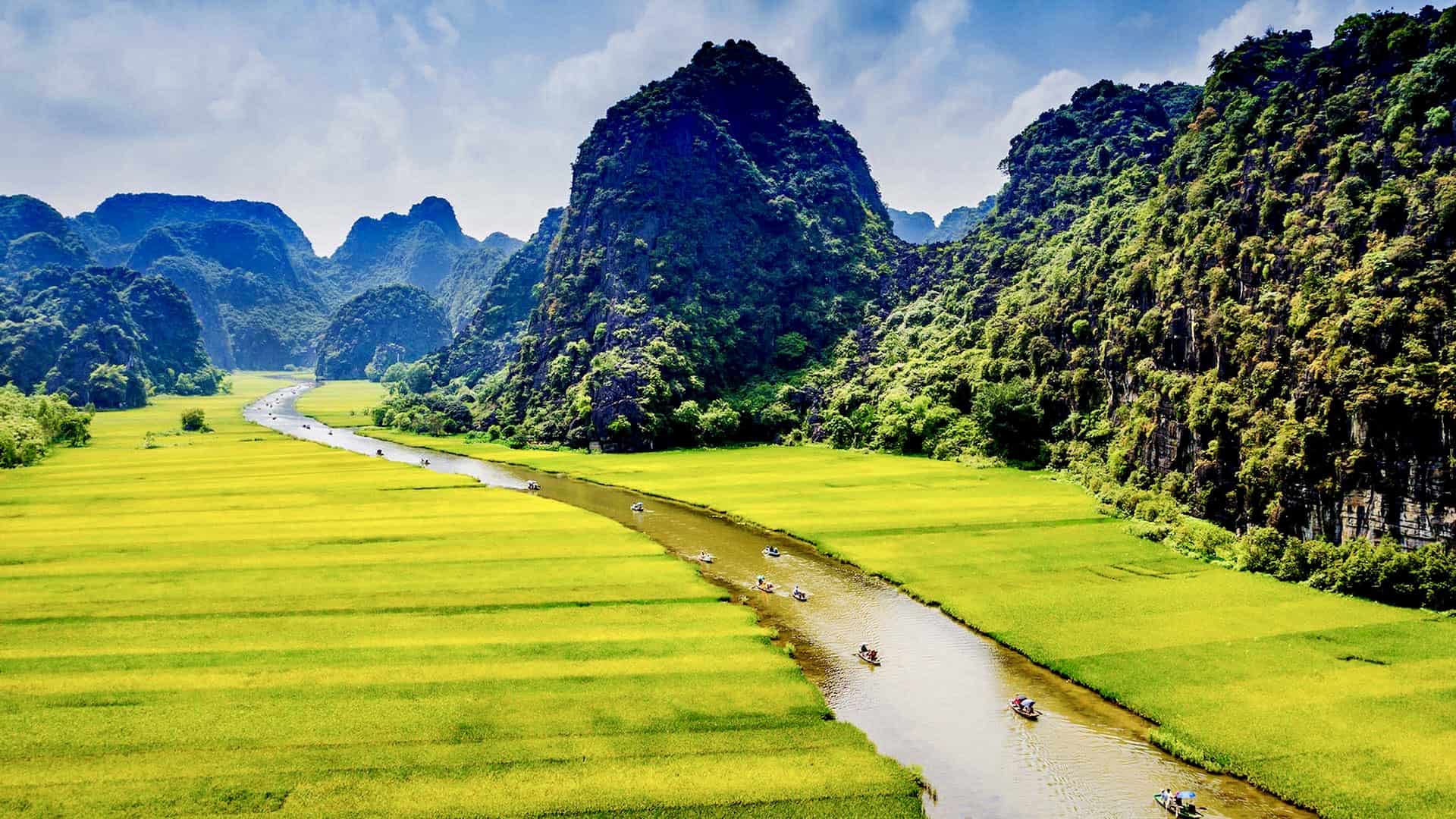
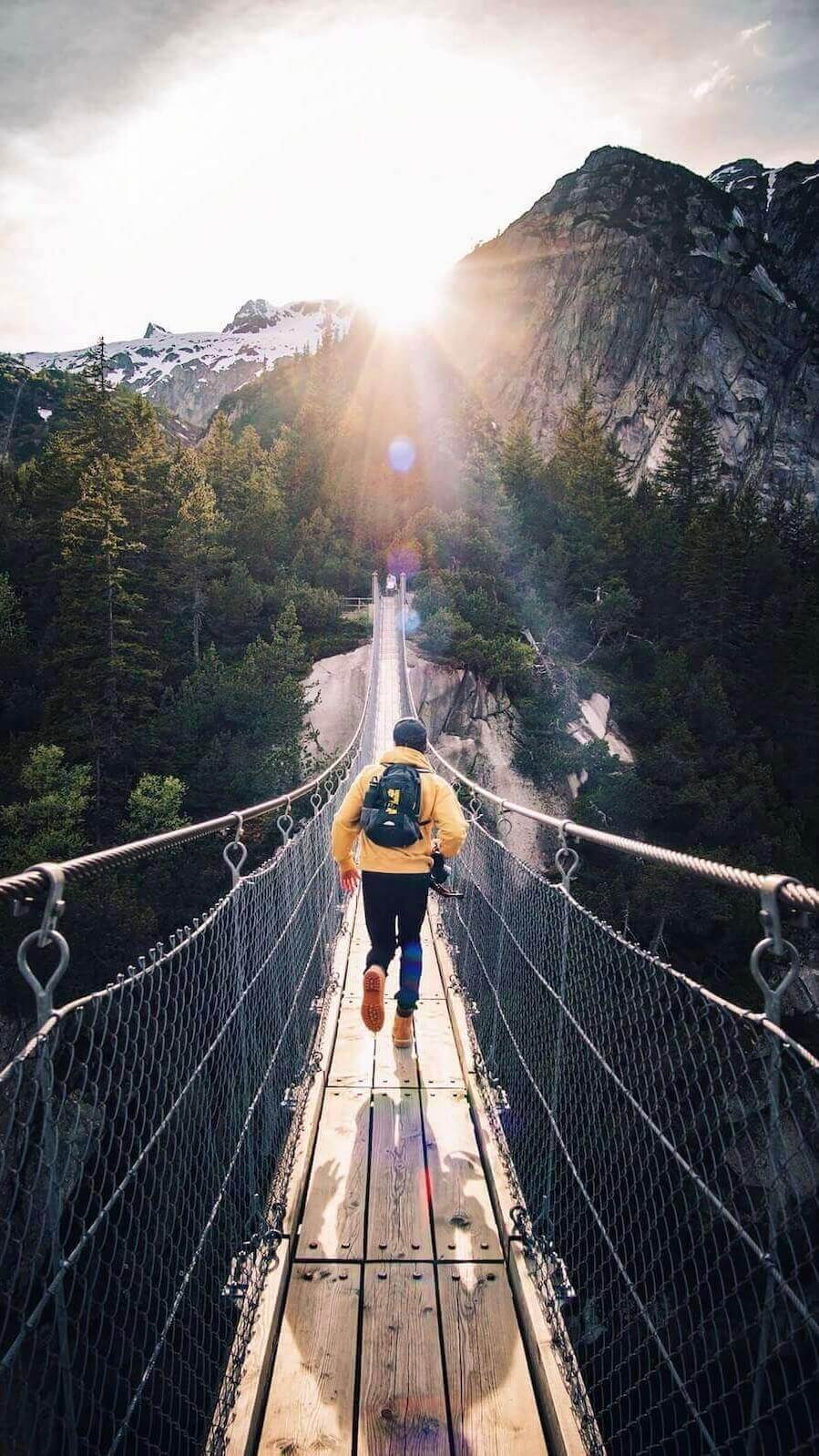
Stephanie
This site always has such unique places to visit. Hashima Island is certainly worth checking out.